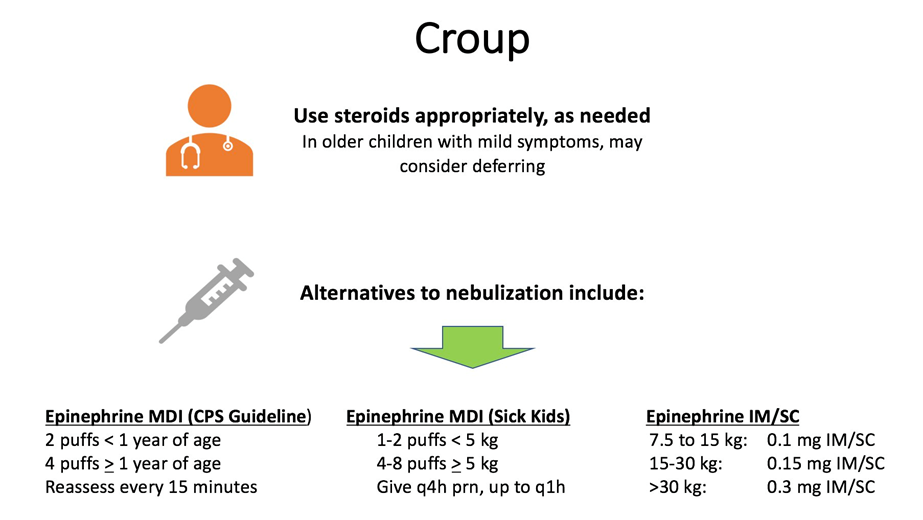A 5-year old is brought to the ED with a temperature of 99°F (37.5°C), a barky cough, stridor and hoarseness. Which nursing intervention should the nurse prepare for?
Informing the child's parents about a tonsillectomy.
Immediate IV placement.
A tracheostomy set at the bedside.
Cool mist and respiratory treatment of racemic epinephrine
The Correct Answer is D
A. Informing the child's parents about a tonsillectomy:
Tonsillectomy is not the immediate intervention for the symptoms described. This intervention is not necessary at this point.
B. Immediate IV placement:
While hydration may be necessary, immediate IV placement is not the primary intervention for a child with croup presenting with stridor and hoarseness.
C. A tracheostomy set at the bedside:
While croup can cause airway obstruction, preparing for a tracheostomy is not the initial intervention. Less invasive measures are typically attempted first.
D. Cool mist and respiratory treatment of racemic epinephrine:
This is the correct intervention. Croup, often caused by viral infections, can result in swelling of the upper airway, leading to the characteristic barky cough, stridor, and hoarseness. Administration of cool mist and racemic epinephrine can help reduce airway swelling and alleviate symptoms.

Nursing Test Bank
Naxlex Comprehensive Predictor Exams
Related Questions
Correct Answer is D
Explanation
A. Ask a Buddhist priest to visit.
While spiritual and cultural support can be beneficial, the immediate concern raised by the father is related to dietary preferences. Requesting a visit from a Buddhist priest may not directly address the issue of providing a suitable diet for the child.
B. Explain that hospital patients are exempt from dietary rules.
This approach may not be well-received, as it could be perceived as dismissive of the family's cultural and religious beliefs. It's important to respect and accommodate the family's dietary preferences whenever possible.
C. Help the parent understand that meat provides protein needed for healing.
While nutritional education is valuable, it should be presented in a way that respects the family's beliefs. It's important to acknowledge and accommodate the family's vegetarian preferences while exploring alternative sources of protein.
D. Order the child a meatless tray.
This is the most appropriate intervention in this situation. Ordering a meatless tray respects the family's dietary preferences and ensures that the child's nutritional needs are met within the context of their cultural and religious beliefs.
Correct Answer is D
Explanation
A. Document B/P not obtained because the child was in the playroom.
This is not the best option. The nurse should attempt to obtain the blood pressure as part of routine monitoring.
B. Take the child back to their room, take their B/P and then take them back to the playroom.
This may disrupt the child's play and is not the most efficient approach for routine blood pressure monitoring.
C. Take the child to the treatment room.
This might be unnecessary for a routine blood pressure check and could cause unnecessary anxiety for the child.
D. Take the B/P in the playroom.
This is the best intervention. If possible, taking the blood pressure in the playroom allows the child to remain in a familiar and comfortable environment, reducing anxiety and promoting cooperation.
Whether you are a student looking to ace your exams or a practicing nurse seeking to enhance your expertise , our nursing education contents will empower you with the confidence and competence to make a difference in the lives of patients and become a respected leader in the healthcare field.
Visit Naxlex, invest in your future and unlock endless possibilities with our unparalleled nursing education contents today
Report Wrong Answer on the Current Question
Do you disagree with the answer? If yes, what is your expected answer? Explain.
Kindly be descriptive with the issue you are facing.
